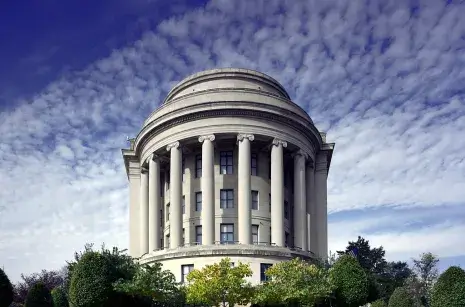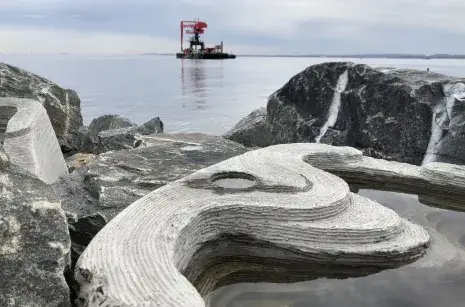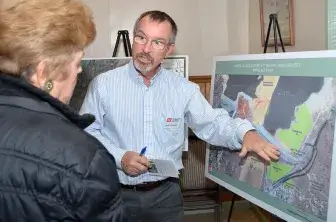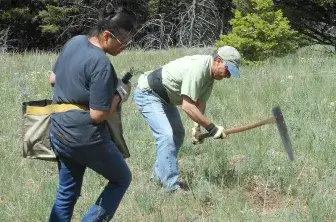Strategy 4: Deploy Strategic Mitigation
Adopt Nature-Based-Solutions

Many ecosystems have the power to cut emissions, improve resilience, and provide space for recreation. Restoration efforts through nature-based solutions help store carbon, while also harnessing these benefits and creating new jobs. However, many carbon offsets are low-quality and should be better monitored. Laws that seek to support mitigation should fund nature-based solutions. Indigenous traditions are vital to returning to more sustainable land use habits.
More recommendations
Nature-based climate solutions, those using natural processes, systems, and biodiversity to address environmental and societal challenges, can be important tools for reducing emissions and increasing sequestration while protecting biodiversity and improving overall community resilience.[i] Examples of nature-based climate solutions include the protection and restoration of wetlands, grasslands, and forests, as well as the expansion of carbon-sequestering ecosystems, where appropriate. Nature-based climate solutions have the potential to contribute to emissions reduction and also build resilience in local communities. However, many nature-based climate solutions created for carbon offset calculation are of low quality.[ii] To combat this, the government should take enforcement action against offset systems that make false or misleading claims about their effectiveness.
Nature-based climate solutions are most attractive when they combine affordable costs with cobenefits such as conservation of biodiversity, water quality improvements, disaster risk reduction, and job creation in local economies. Nature-based climate solutions have been effectively applied in some of the most vulnerable areas in the United States, particularly along the Gulf Coast. The Louisiana Coastal Master Plan includes $1.7 billion for investments in coastal restoration and wetland revitalization.[iii] The Alabama Coastal Foundation has worked to restore oyster reefs, which protect against storm surge and erosion, while also improving water quality and growing the local economy.[iv]
In addition to providing investments in local communities, these efforts have increased well-being in some of the most vulnerable areas through green sector jobs, greater access to green space, and the preservation of cultural heritage. These cobenefits make nature-based climate solutions popular across the political spectrum: they can appear market-friendly and can appeal to a wide set of values and priorities, such as increasing rural land management and development, conserving nature for fishing and hunting, and promoting environmental justice.[v]
Expand the integration of nature-based climate solutions in climate policy.
Climate policy at the federal, state, and local levels should recognize nature-based climate solutions as key parts of the response portfolio for mitigating climate change. This can include setting targets for carbon sequestration and promoting the use of nature-based climate solutions in emissions-reduction plans. For example, the federal government’s Climate Action Plan includes a goal to conserve at least 30 percent of U.S. lands and waters by 2030, an investment in reforestation and restoration of wetlands and other ecosystems, and funding for coastal resilience projects.[vi]
Amending existing regulations to better incorporate nature-based climate solutions will increase available funding streams. Many existing laws and regulations may not explicitly allow for or support the use of nature-based climate solutions, creating legal and regulatory barriers to implementation. Updating laws to better support nature-based climate solutions could help reduce these barriers and facilitate their adoption. For example, amending the Coastal Zone Management Act to require consideration of nature-based solutions, such as living shorelines, as part of coastal zone management planning and decision-making processes would allow frontline communities access to more resilient solutions.
Promote Traditional and Indigenous Knowledge and leadership.
Traditional and Indigenous Knowledge provides valuable insights into climate mitigation options through nature-based climate solutions. For example, many Indigenous communities in the United States have used prescribed fire for thousands of years. Prescribed fire can contribute to climate mitigation by reducing available fuel and promoting the growth of fire-resistant vegetation, which sequesters carbon. The Karuk Tribe in California helps incorporate their traditional ecological knowledge into contemporary fire management practices to promote ecosystem health and resilience while also mitigating climate change.[vii] Indigenous-led conservation projects in the United States also protect important biodiversity and carbon storage areas while supporting Indigenous livelihoods and cultural values. For example, the Yurok Tribe in California has established the Yurok Carbon Project, which aims to reduce greenhouse gas emissions and sequester carbon by sustainably managing their forests.[viii]
[i] Justine Delangue, Pauline Teillac-Deschamps, and Sébastien Moncorps, Nature-Based Solutions for Climate Change Adaptation and Disaster Risk Reduction (Montreuil, France: IUCN French Committee, 2019), https://www.uicn.fr/wp-content/uploads/2019/07/uicn-g20-light.pdf.
[ii] Nathalie Seddon, Alexandre Chausson, Pam Berry, et al., “Understanding the Value and Limits of Nature-Based Solutions to Climate Change and other Global Challenges,” Philosophical Transactions of the Royal Society B 375 (1794) (2020): 20190120.
[iii] Natalie Peyronnin, Mandy Green, Carol Parsons Richards, et al., “Louisiana’s 2012 Coastal Master Plan: Overview of a Science-Based and Publicly Informed Decision-Making Process,” Journal of Coastal Research 67 (10067) (2013): 1–15.
[iv] Quan T. Lai, Elise R. Irwin, and Yaoqi Zhang, “Quantifying Harvestable Fish and Crustacean Production and Associated Economic Values Provided by Oyster Reefs,” Ocean and Coastal Management 187 (2020): 105104, https://doi.org/10.1016/j.ocecoaman.2020.105104.
[v] Amber Todoroff, “What Could Conservative Climate Action Look Like? American Climate Contract Provides Framework for GOP Climate Action,” Environmental and Energy Study Institute, July 2 2020, https://www.eesi.org/articles/view/what-could-conservative-climate-action-look-like.
[vi] National Climate Task Force, The White House, “President Biden’s Actions to Tackle the Climate Crisis,” May 8, 2023, https://www.whitehouse.gov/climate/ (accessed June 12, 2023).
[vii] Aja Conrad, Miakah Nix, and Kathy Lynn (Pacific Northwest Tribal Climate Change Project/University of Oregon Environmental Studies Program), “Karuk’s Innate Relationship with Fire: Adapting to Climate Change on the Klamath,” U.S. Climate Resilience Toolkit, July 22, 2020, https://toolkit.climate.gov/case-studies/karuk%E2%80%99s-innate-relationship-fire-adapting-climate-change-klamath.
[viii] Beth Rose Middleton Manning and Kaitlin Reed, “Returning the Yurok Forest to the Yurok Tribe: California’s First Tribal Carbon Credit Project,” Stanford Environmental Law Journal 39 (2019): 71.





